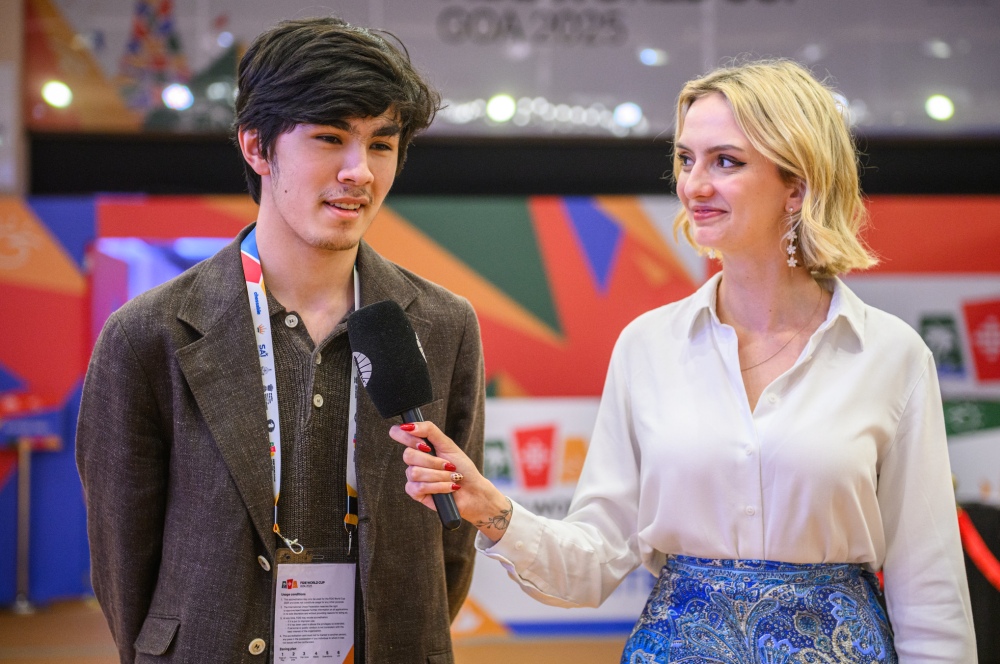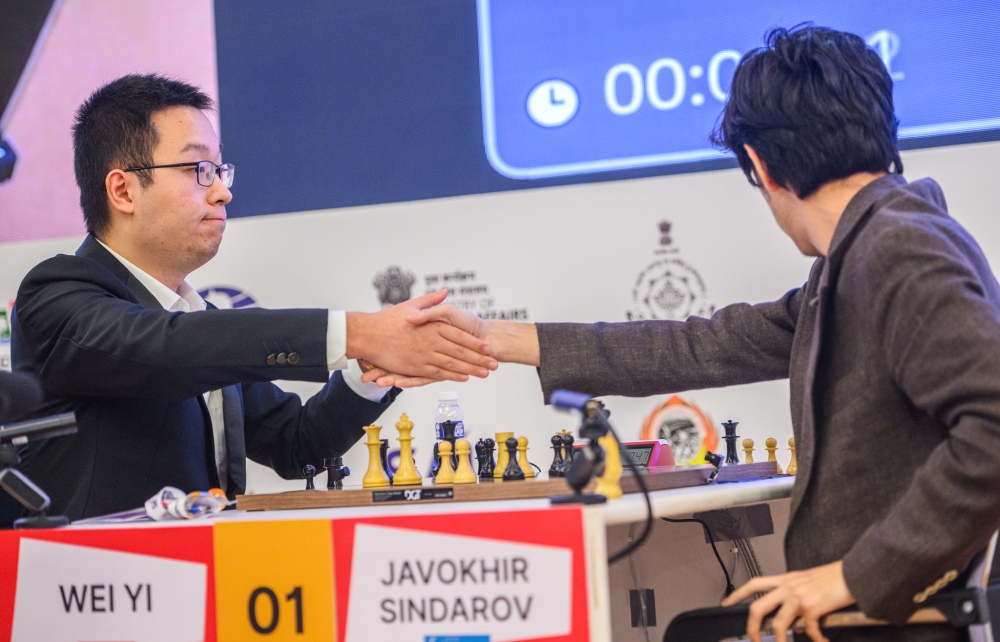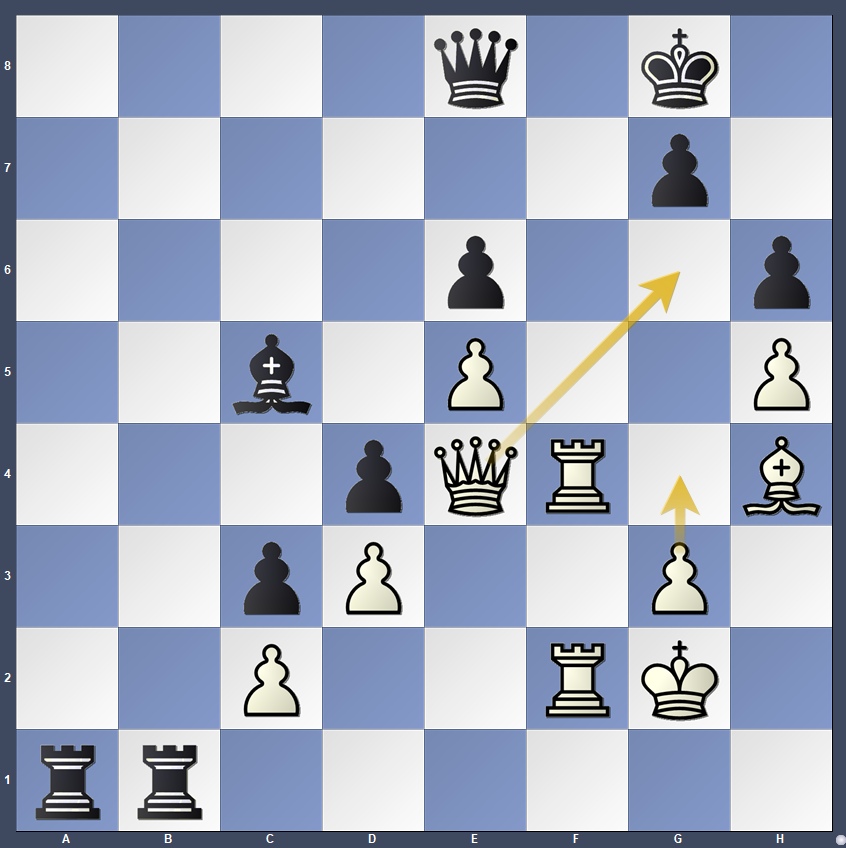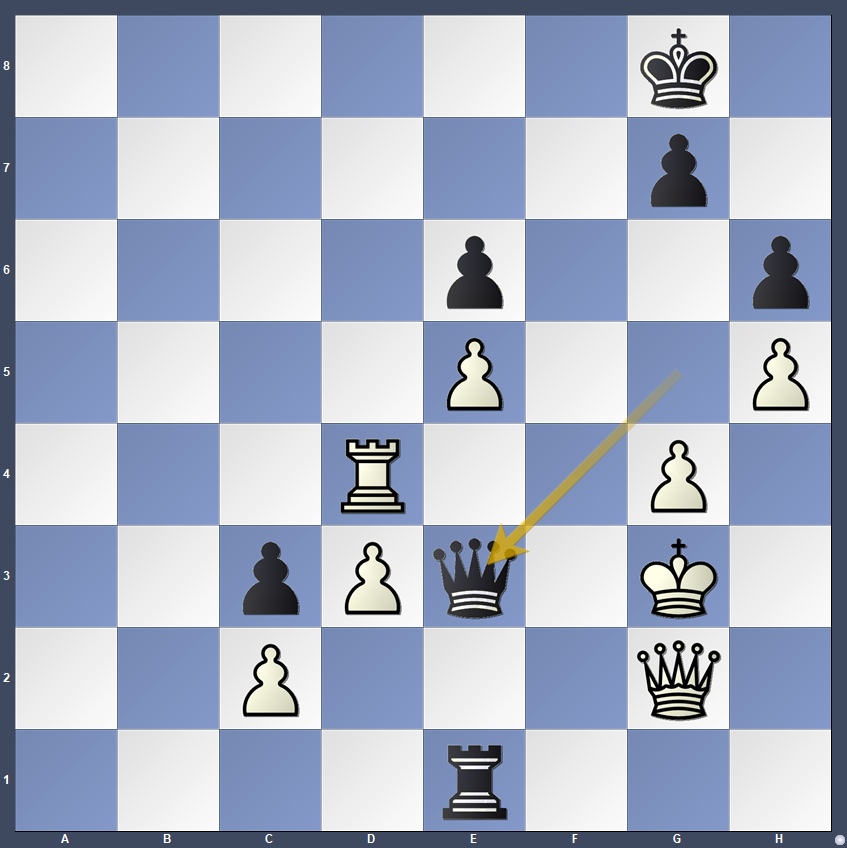
Javokhir Sindarov secured the title after a tense tiebreak match lasting only two games, earning a place in the history books as the youngest FIDE World Cup Champion.
The final day of the FIDE World Cup arrived with all the ingredients for a dramatic finish. What began on November 1st with 206 players had now narrowed to just two: Chinese Number 1 Wei Yi and Uzbek star Javokhir Sindarov. Both had endured long, difficult paths to reach this stage, and after two classical draws, they carried the battle into tiebreaks. With both players exceptional in rapid and blitz throughout the event, there was no clear favourite.
With his 2–0 classical victory over Nodirbek Yakubboev, Andrey Esipenko secured third place and qualification to the Candidates, leaving only one board on the stage today. All attention shifted to the final match, a fitting conclusion to an almost month-long marathon. The ceremonial first move was made by GM Dibyendu Barua, Vice President of the All India Chess Federation and the second Indian player after Viswanathan Anand to earn the grandmaster title.

While the tiebreaks took center stage, the atmosphere in the hall reflected the significance of the moment. Preparations for the closing ceremony had begun early in the morning, with a stage set up along the side of the hall. Outside, tables were arranged poolside for the gala-style dinner that would bring the month-long event to an elegant close. But before the celebrations begin, let’s take a look at how the games unfolded today.
Final tiebreak result:
Wei Yi ½ – 1 ½ Javokhir Sindarov
Wei Yi (2752) vs Javokhir Sindarov (2721)
The day began with a change of pace: Sindarov avoided Wei Yi’s trusted Petroff by beginning with 1.d4, and a Queen’s Gambit Declined Ragozin soon appeared on the board. It was a largely even game with interesting play from both sides, remaining balanced as it moved into a bishop endgame. Everything pointed toward a draw until a sudden, serious mistake shifted the evaluation.
Wei Yi had just played 30…g5, whereas almost any bishop move would have held equality. This instead allowed White to reach a winning position after 31.Be4, forcing the trade of bishops. After 31…Bxe4, White would enter a winning pawn and then queen endgame – both promote their pawns simultaneously, but Black would lose due to vulnerability of his kingside pawns. If 31…Bc6, the key move 32.h5 becomes essential, leading again to a favourable bishop trade and a dominant white king.
Sindarov, however, took a few minutes before choosing 31.h5, which returned the evaluation to equality. Wei Yi, visibly aware of his earlier error, immediately removed the bishop from the dangerous h1-a8 diagonal, delayed the trade, maintained opposition, and guided the game safely to a draw. He said that after the game he realised this which made him sad, b ut he tried to not let it get to him in the next game, where he then delivered.

The second game began with an Italian, where Sindarov, playing with the Black pieces, opted for a solid setup with …Be7 and …d6. In the middlegame, however, it was White who adopted a more passive approach, allowing Black to arrange his rooks at active positions. Still with the only weakness in his camp – the c2-pawn – White comfortably maintained balance. Curiously, it was Sindarov who offered a draw at one point, which Wei Yi declined.
And then the time scramble began. Wei opened up the position with the objectively strong but double-edged pawn-push f3-f4, and it nearly worked for him as White emerged clearly better at some point.
Chinese GM did not find the precise 52.Qg6! which would have posed serious problems for Black after 52…Qxg6 53.hxg6 as his king trapped in the corner. Instead White played 52.g4? and it was equal again.
Sindarov played intelligently, creating practical problems for White, where a single misstep could tip the balance. Black’s rook duo on the first rank grew increasingly dangerous, while Wei Yi survived several critical moments by making moves with only one second left on the clock. But eventually time pressure took its toll, producing a decisive mistake from Wei Yi:
Black’s queen is preparing to infiltrate via 57…Qh4, and White must find the only move 57.Kg2 to stay alive. After 57…Qh4, White has 58.Rf8+! Kxf8 59.Qf3, forcing perpetual check, and Black cannot escape.
Instead, with a single second remaining, Wei Yi erred with 57.Rxd4?? Sindarov immediately jumped on the opportunity: 57…Qh4+ 58.Kf4 Re1 59.Qg2 Qg5+ 60.Kg3 Qe3+
Wei Yi extended his hand in resignation, and Sindarov happily accepted, prompting applause throughout the hall.

The happy champion described the victory as the best day of his life and career, adding that it was only the beginning. Outside the hall, he was embraced by family and friends, celebrating him with cheers and wrapping an Uzbek flag around his shoulders, the start of an evening of celebrations.

And that concludes our time here in Goa after a month of intense chess. The spotlight has been on the final four for the past week, but looking back, the event was filled with memorable performances and stories. From José Martínez’s impressive run and upset over Nodirbek Abdusattorov, to Frederik Svane’s victory against World Champion Gukesh D, to viral moments like Daniil Dubov’s “10-minute prep” against Praggnanandhaa, and heartbreaking ones such as Arjun Erigaisi’s final tiebreak blunder against Wei Yi. These are moments we will remember, and I hope you will too.
This World Cup delivered upsets, brilliance, drama, and most importantly, three new FIDE Candidates Qualifiers who will compete next year in Cyprus.
Now, the focus shifts to the next major event: the 2025 FIDE Rapid and Blitz Championships in Doha, Qatar, from 26-30 December. Stay tuned.
Written by WIM Charlize van Zyl (Goa, India)
Photos: Michal Walusza






